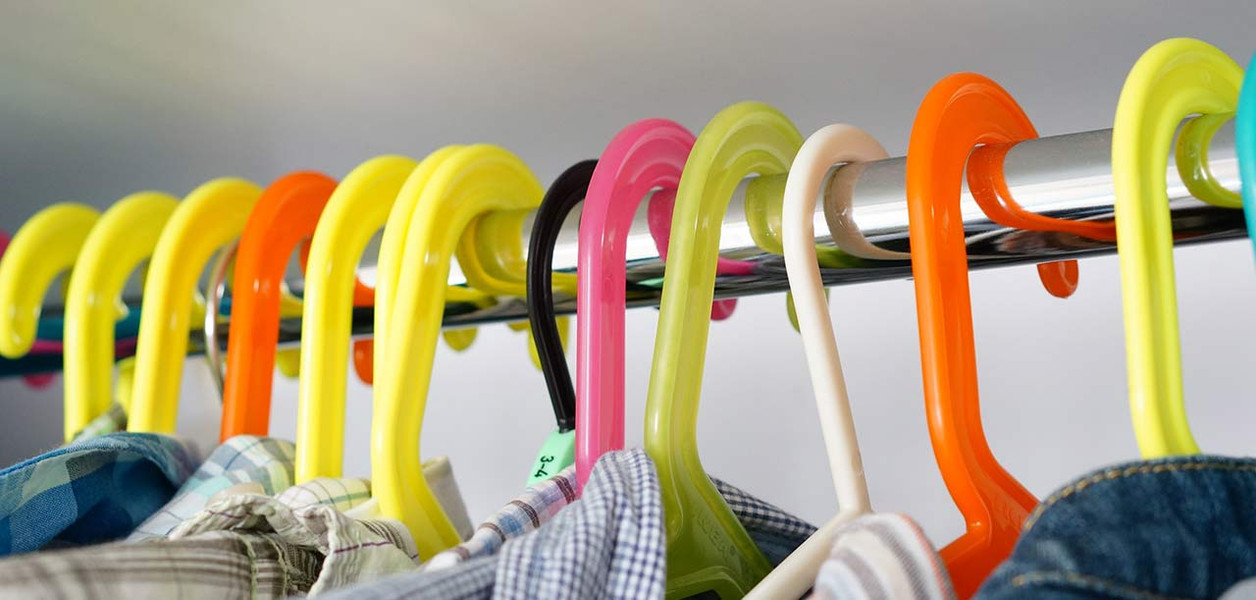Investing in the right hangers can help your product offerings to a new level as a fashion retailer. Similar to how the interior design and the operations of your store can affect your customer experience and satisfaction, your hangers are an extension of your operations, branding, and customer experience.
Among the questions you should be considering are:
- What factors do you need to consider when you buy hangers in large quantities?
- What types of wholesale hangers are available in the market?
- How do you make the best decision for offering hangers to your customers?
Gear up to get answers on all these questions and more! But first, a pitstop to the past and a revision of the basics; hence, here's a glimpse into the interesting origins of hangers and deconstructing its form and purposes.
The Origin of Hangers
Some historians trace it back to none other than Thomas Jefferson, one of our Founding Fathers. His creation of a 'space-saving' device for the closet may have been a precursor to the hanger we know and use today.
However, more popularly, the invention of the modern clothing hanger is credited to O.A. North. It originally consisted of a piece of wire with two narrow ovals twisted together in the middle and a hook.

Deconstructing the Modern Hanger
From barebone wired structures to elegant pieces of functional art, hangers have come a long way. So, what do features like clips, swivel hooks, and notches help with? How does the shape of a hanger make a difference?

Things to Consider When Buying Hangers in Bulk
01 | Materials
-
Wire
The original material for hangers, wire, is highly cost-effective. Dry cleaners use wire hangers the most due to their cost-effectiveness. However, these hangers are not at all durable and lose shape soon. They can also rust.
-
Plastic
Among the most popular materials, plastic is economical and low-maintenance. Plus, there are a variety of plastics to suit your needs. The downside of plastic hangers is their durability and low resistance to pressure. Hanging heavy clothes on plastic hangers may not be a good option.
-
Metal
Sturdier than wire, metal hangers are mostly made of iron, copper, or stainless steel. Designed to be long-lasting, rust-proof, they can be used to hang heavy leather or wool clothes.
-
Wood
Similar to metal hangers, wooden hangers are also long-lasting and robust. The varied finishes they come in make them an aesthetic and environmentally-friendly choice.
02 | Features
-
Clips
Hangers with clips make for a super grip. These hangers usually have a set of clips on each side of their bar, preventing your clothes from being blown off, falling, and sagging. They're ideal for holding pants and skirts in place and minimizing wrinkles.
-
Swivel Hooks
Swivel hook hangers have turnable hooks. This feature makes replacing them for display highly convenient in rows without worrying about the side. It also means you can easily remove them from tight places and make your clothes viewable from all angles without the need to remove them from the hanger.
-
Notches
Notches in a hanger are the embedded grooves on the corners. They help secure your clothing and prevent them from slipping off. They also provide extra durability and stability to your hangers by reducing the pressure points, making them ideal for heavier garments.
Also, hangers with notches can hang clothes with thin straps like undershirts, blouses, or lingerie or hang dresses with wide necks.
-
Padded Hangers
Padded hangers are excellent for delicate garments like woolen sweaters and dresses. They 'pamper' special outfits. You can also use them to hang jackets and coats.
03 | Usage
-
Shirts
While almost any type of hanger can be used to hang shirts, choosing hangers in bulk with notches can help you maintain the structure and prevent them from falling off.
-
Pants
Pant hangers usually come with a straight bar to fold and hang pants. Another ideal way is using hangers with clips.
-
Suits
The ideal hangers for suits are wooden hangers made of a single piece with rounded corners. The single piece ensures good support and less hassle, while the rounded corners prevent slipping. Sturdy plastic hangers with metal hooks and clips are also a good alternative if not wooden.
04 | Aesthetic
While the materials, features, and usage take precedence in deciding which hangers to buy, consider your store’s interior design, branding, and customer appeal as well. To this end, consider buying hangers that complement your store's interiors, color palettes, and overall tone so they won’t undermine your branding and customer experience. For example, flimsy plastic hangers will not create a good impression if your business is an upmarket store specializing in formal wear. Therefore, consider your customer profiles and drive your decisions accordingly.
Among the things to be mindful of is that you can customize your hangers by branding them and, thereby, enhancing your branding and customer experience.
Conclusion
Often overlooked, hangers are an essential part of any apparel retail business. When used and implemented effectively, hangers can become a valuable tool that can increase your brand appeal, customer experience, and sales revenues. Consider selecting hangers based on how their material, features, usage, and aesthetic tonality are strategically aligned with your branding, operations, and customer experience. From swivel hooks and clips to notches and padded layers, there are many options to leverage in showcasing your apparels and driving the growth of your sales revenues.
What may have started as a space-saving device is now a critical consideration for your branding and customer experience. Make the most of this opportunity.
At SCI, we offer our valued customers quality recycled and new hangers at amazing prices.

